Nerja Caves and a motorhome record (for us)!
Zagan the motorhome has broken his record for staying still. He’s just clocked over three weeks at Aula de Naturaleza Corjito San Miguel, a kilometre or so outside Nerja in Andalusia, Spain (N36.747411, W3.898575). Apart from when he’s been in storage at home, the only other time he’s been still this long was when we did a six week house-sit in Valle de Abdalajis, also in Andalusia, but he did get a couple of day trips back then to visit things like the Caminto del Rey. Here in Nerja, he hasn’t moved an inch and we’ve gotten used to not having to pack things away so they don’t fall over or rattle when we drive. It’s going to be a long check-list and shock to the system when we do roll out of here.
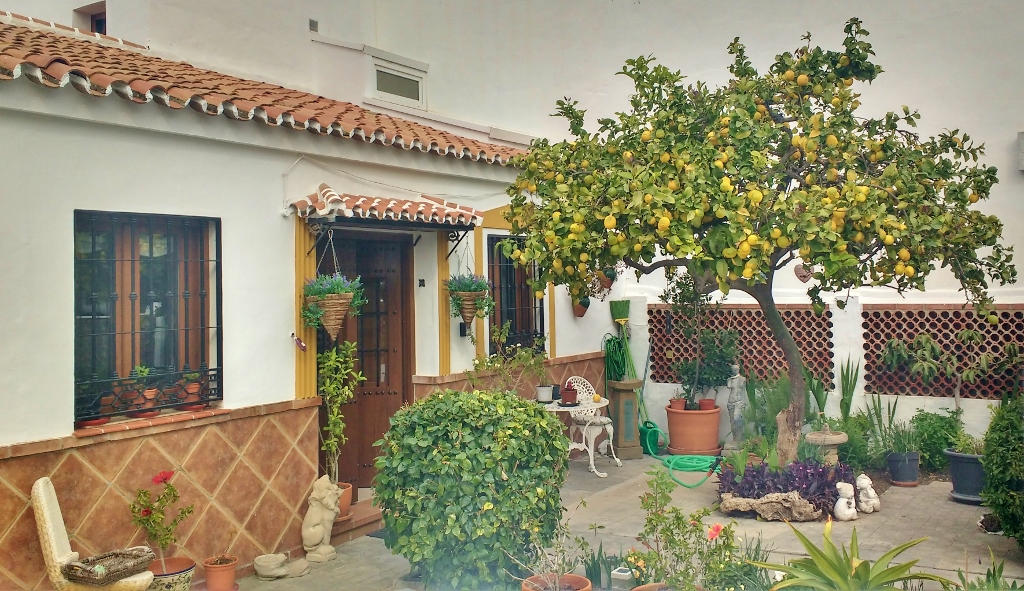
For this post I thought about documenting what we’ve been doing each day, to give you an idea of what a week of campsite life is like. Then I realised for everyone it’s different. Just looking at the people in the vans around us, some of whom live here, most have been here since Autumn last year, they are all out and about doing different things each day. When we stayed on the aire in Alvor, Portugal for Christmas a few years back we met up a few groups of folks stopping there long-term. Maybe it was just because it was Christmas, or maybe we were seeing it with different eyes, but we really didn’t feel like we fitted in. This was one of the reasons we’ve been reluctant to stay put somewhere. I can’t speak for the rest of the campsite, but here on Calle de la Zambra (Zambra is a type of flamenco) folks are out cycling and hiking in the hills, learning Spanish or taking part in the Yoga classes on the site. One chap has kindly lent us his walking guides and maps of the area, as they are all in his head now after several years visiting here (he also walked into town the other day and picked up several copies of the free English newspapers and magazines for everyone on the street – they have made ‘interesting’ reading!). While there is the odd occasional gathering for drinks, to celebrate a birthday or to say farewell as part of the community leaves, it feels like part of life, not the whole of life here which was the lasting impression of our time in Portugal. We feel like we fit in here, and we’re liking it.
Our mornings are mainly taken up with training runs, which can creep into the afternoons depending on the length of them. Jay goes out nearly every day, and I am usually every other day. Depending on the length of the run sometimes we take a siesta in the afternoon, otherwise we use that time for getting stuff done, reading, writing, learning Spanish or walking / cycling to the shops (the nearest supermarket is about 2 kilometres away). This week we had to buy a top up for our Spanish SIMYO SIM (it turns out the data allowance only rolls over if you buy credit for the next month) so headed to the Repsol garage a couple of hundred metres up the road to buy it. While there we discovered a small fruit and veg stall next to the petrol station. We have no idea of its opening hours, but for less than €3 we stocked up with some tomatoes, a courgette, an aubergine, and a huge sweet potato (but not the one that was the size of a football), after we’d paid the owner put a couple of ripe avocados in the bag for us – which would have probably cost more than everything we’d bought back home! So, guess where we’ll be stocking up on our fresh stuff from now on?
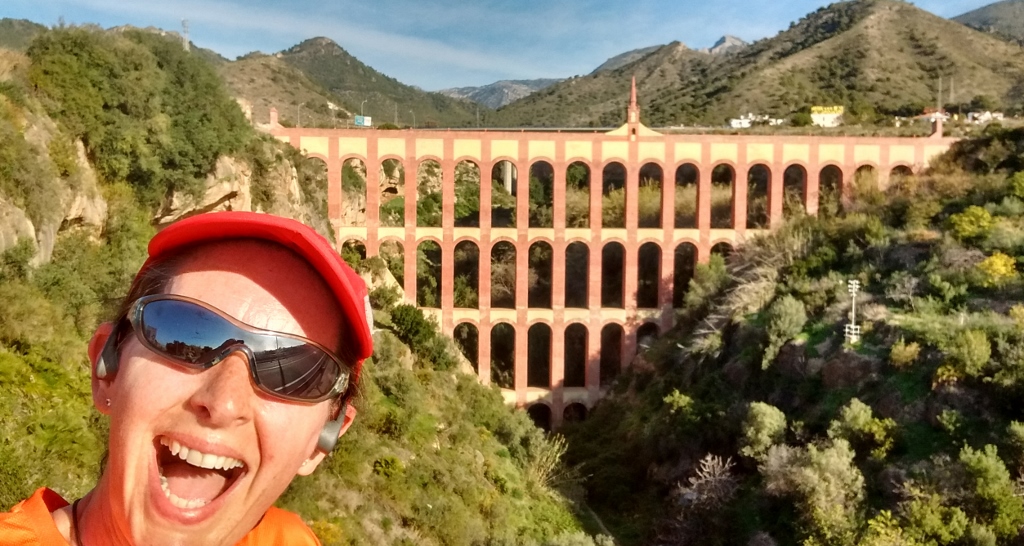
In the evenings we walk into the town and find somewhere to watch the sunset. Being here a while means you can slow right down, the other night we spent quite a while watching boats line up in the sea to be ridden onto a trailer towed by a JCB, before being dragged across the beach to the boat storage yard. My favourite place to hang out is on the Balcon de Europa as everyone congregates there and there’s a great ice cream stall nearby. I could happily spend every night there, sitting listening to all the languages around me, eating an ice cream, and watching the sun set, the moon rise and the stars come out.
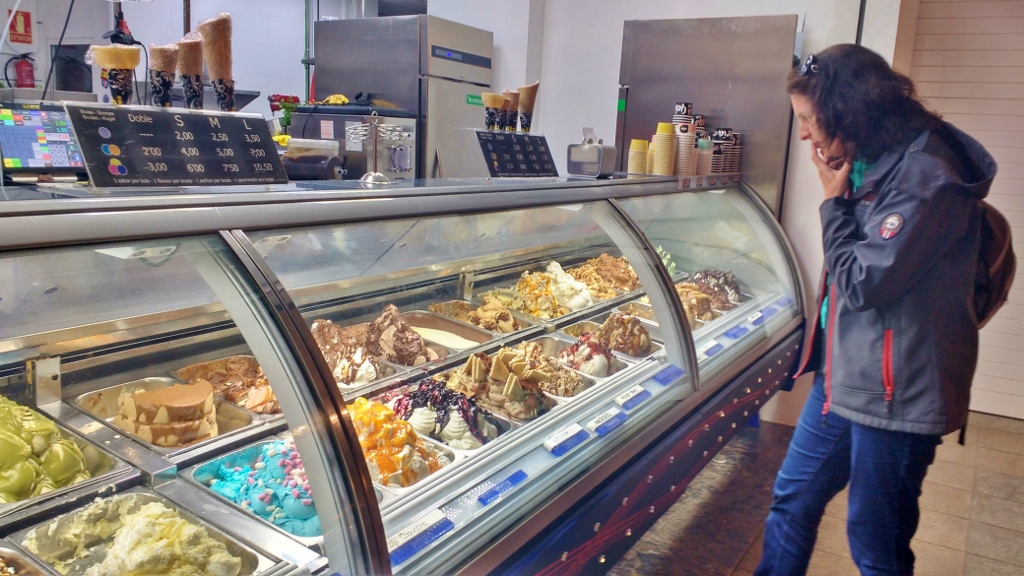

The Caves of Nerja
On Thursday, we ventured to one of the ‘must see’ attractions in the area, Cueva de Nerja, The Nerja Caves. The caves are close to the village of Maro, which I guess wasn’t big enough for them to be named after, 6.6 kilometres from our campsite (I can be so precise because I ran there and back on my long run this week). When we first arrived in Nerja everyone said that we must go and visit the caves, but we didn’t fancy it. Having visited the Postojna Caves in Slovenia (where a mini train takes you deep into the mountains), the Diros Caves in Greece (here we floated along on a boat) and the Wieliczka Salt Mine in Poland (which might not be natural caves, but the carvings done by the miners make it well worth the visit), we felt we’d had our fill of caves. However the more we settled into life here, the more we felt like going to places and seeing stuff. Then when we found out you could visit the caves for free – well, how could we refuse?
The slight catch with the free visit is that you have to be on the 9.30am tour in the week (not a problem) and you need to be a member of the EU! Hmmm. We’d missed officially fitting into the category by a week or so. We asked other Brits who had been and they told us they booked online (up to 48 hours in advance) and no one asked where they were from, so we did the same – opting to pay the €1 each for the audio guide which we’re really glad we did as there was no other explanation of what you were seeing.
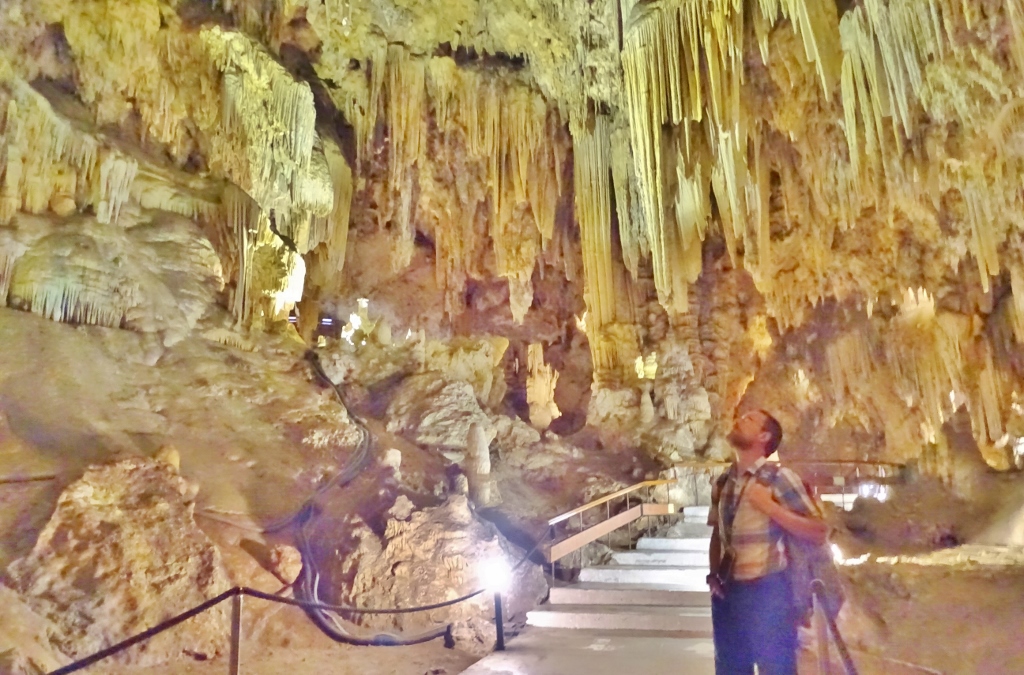
As luck would have it Thursday morning turned out to be cloudy as we hopped onto our bikes and cycled up to the caves (yes it’s uphill all the way, but what a great ride back!). We joined the short queue, picked up our audio guides and watched a short film explaining how the caves were discovered in 1959 by five local lads who had spotted some bats flying out of a gap in the rocks and decided to explore. As we walked around the caves the audio guide explained how the lads had been brave enough not to be scared by the rock formations that looked like monsters, but did finally flee the caves after finding skeletons in there. They reported their findings to the authorities thinking it might be others who had ventured into the caves to explore and didn’t make it out, but it turns out the bodies were ancient and the cave was possibly a neolithic burial chamber.

On the tour you’re only able to visit about a quarter of the cave system due to difficult access to some areas and pre-historic cave paintings in other areas that need to be kept in the dark (lighting the caves enables a green moss/mould to grow on the rocks which would destroy the paintings). As to be expected the free tour was quite busy, so if you aren’t bothered about getting in early and want to get a shot without folks in it, the tour after ours had only about six people on it and cost around €18.
Our favourite part of the tour was the Cataclysm Cave, which sits around 30 metres underground. Here ‘The Great Column’ one of the largest in the world, sits surrounded by huge chunks of stalactites and stalagmites that ended up there due to a colossal earthquake in the region about 800,000 years ago. We stood and looked at each other, trying to work it out. The Great Column has taken 800,000 years to grown, but the stuff broken up around it grew even longer a go than that, possibly a million years ago? Nature certainly knows how to make you feel like a tiny blip in time.
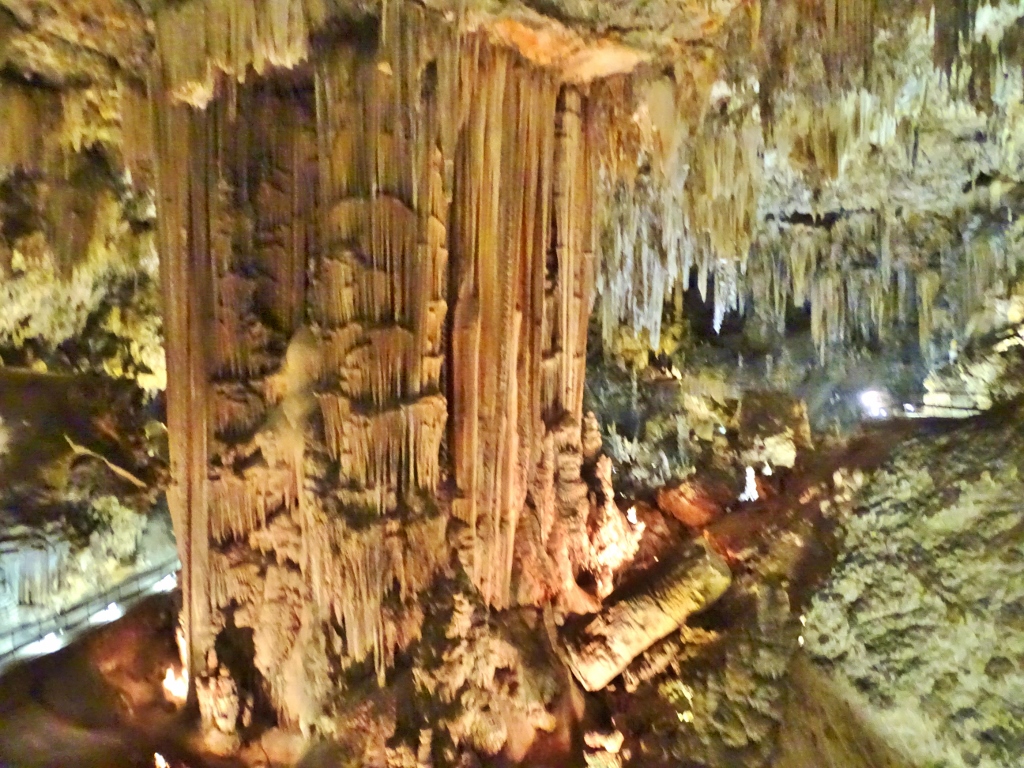
After the caves, we followed a walk up into the hills, information boards pointing out where we were in relation to the caves beneath our feet. We then headed to Maro for a walk around, but there are only about four streets in the village so it didn’t take long. We found ourselves a cafe and had a drink and a well earned tostada.
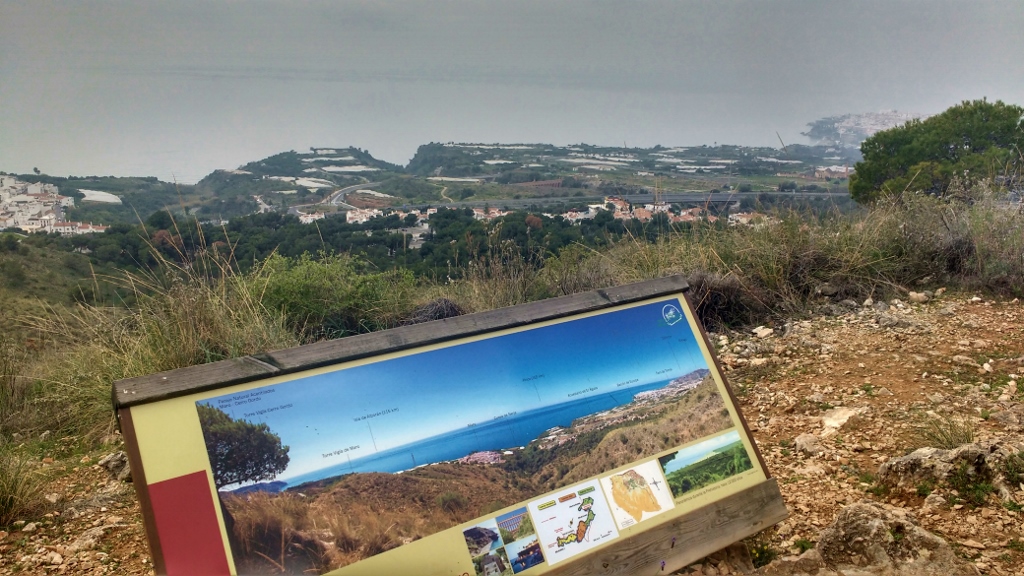
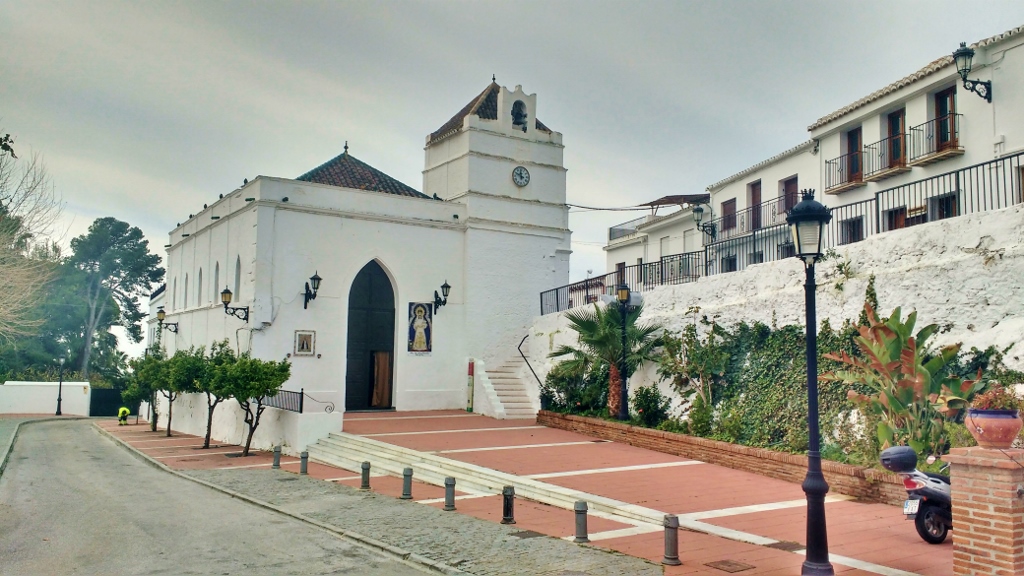
Valentine’s
Eating out in Spain is generally very cheap. On Monday we treated ourselves to a Menu del Dia (a set menu meal usually around €10 for 3 courses with drinks) and after our trip to the caves on Thursday, the sun had burned off the clouds, so we headed to the local chinguirito, beach bar, for a Valentine’s meal. Sure it we were a day early, but that was intentional. I’d already spied signs for a ‘Valentine breakfast buffet’ in one restaurant, priced several Euros above its normal breakfast buffet price (I jogged past on Valentines day and the only difference seemed to be a red carnation on your table). Don’t get me wrong, we aren’t against Valentines Day, but we’d rather celebrate it on a different day when the restaurants aren’t so busy and the prices haven’t gone up. We sat at a table overlooking the sea and for starter tried something I’d seen a few times on the menu but hadn’t got around to ordering – ‘Aubergine with honey’. The aubergine was dusted with a light batter and deep fried, and the locally produced cane honey was thick, dark and sticky sweet – it’s a good job it was our Valentine meal or there might have been a fork fight for the last piece.
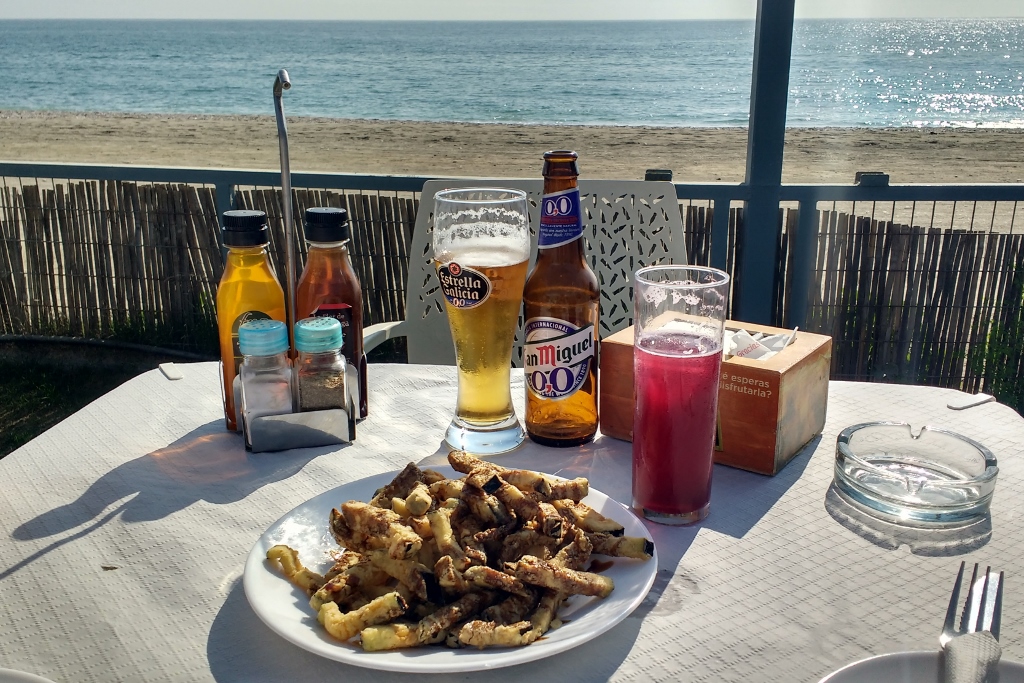
On Valentines Day itself, we headed into town for our usual evening stroll and eventually (after several wrong turns and a tapas bar) found ourselves back at Little Italy, the Italian restaurant with visited with Stuart and Cynthia on our first week here. No heart-shaped balloons here, no special menu and a free table by the patio heater, so we ate out on Valentine’s Day after all – A vegetarian pizza, a calzone (both huge) an alcohol free beer and a glass or wine all for under €10! Luckily I still had a tiny bit of room left for my evening ice cream as we staggered back to the campsite clutching our bellies.
Market Day
Nerja has two market days. Tuesday is the normal market (fruit and veg, thick fleecy blankets and oversized undies) and Sunday is the flea market. Markets always fascinate me, whatever country I am in, and with flea markets (also known as car boot sales) you get a bit more of an insight into peoples lives; what sort of things they have in their homes, what is junk to them these days etc. We cycled over to the Mercedillo, where the markets are held, as it was a couple of kilometres away and spent half an hour or so wandering around the stalls. Of course it was full with the usual stuff – old stereos, mobile phones and numerous remote controls with nothing to control any more. There was a stall sell old laptops and smart phones, as we passed I heard a punter asking Funciona? (does it work – a very wise question), then taking it up a level further we saw a van selling a selection of second hand fridge freezers and washing machines.
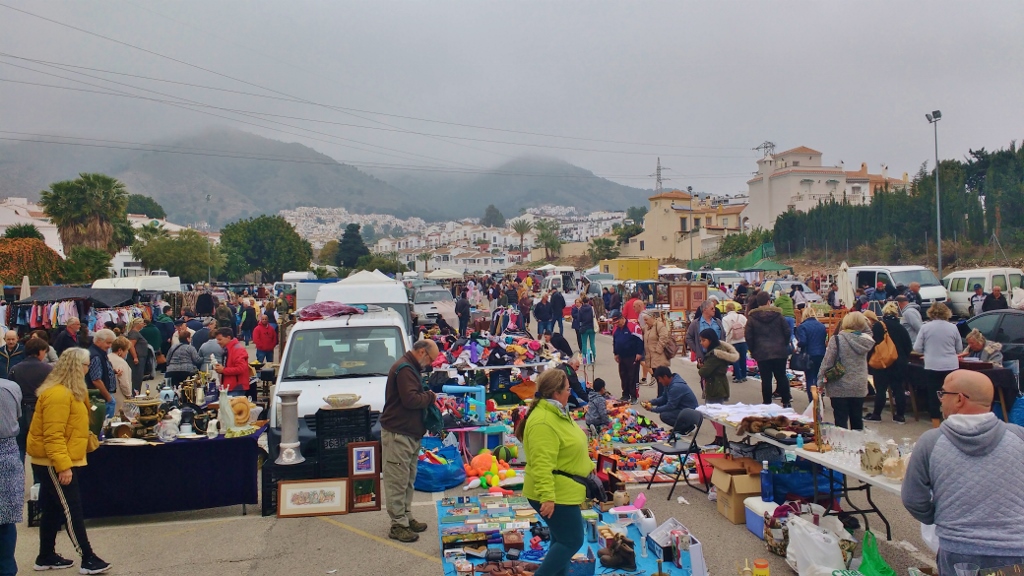
Mixed in together were stalls selling second-hand clothes, tools and household items, next to antique ornaments (at least I hope they were as the prices were high), paintings of bull fighting, and several stalls selling goods we’ve seen a lot in Morocco – carpets, fossils and woven baskets, and one stall was covered in rows of lego characters. I have to say though, I think this market wins as the one where I have seen the most religious items for sale – Jesus on a cross, paintings of Jesus and Mary etc. I was surprised to see them as Spain being a religious country (if the number of religious festivals is anything to go by), I expected them to be the sort of thing that was handed down and adorned every home, but maybe times are changing.

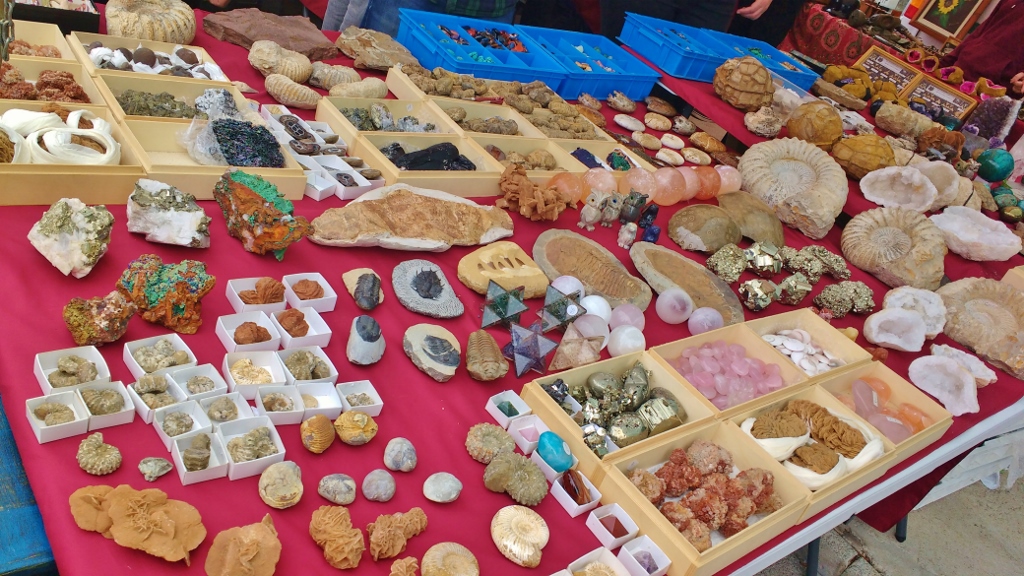
What next?
I asked the campsite owner when we are supposed to leave. We’ve booked and paid for a month (€400 instead of €25 a night), but how long is that? It could be four weeks, or 30 days, but it turned out that the date you arrive is the date you leave the following month. Because it’s January we get a couple of extra days compared to folks who are here during February. We’ve now drawn out a plan with the dates we’re booked into the aire at Malaga for the half marathon, as well as the date we need to be back home by, and Easter which will no doubt push up the ferry prices. This had given us the few dates we can book our return ferry / tunnel for, so after this I’ll have a look and see which is the best value.

Looking at the plan also prompted a bigger discussion as to what do we do for the rest of the time. We have three weeks between leaving here and being in Malaga (which is only 50km down the road), then after leaving Malaga we have a month until we need to be on the ferry home. From what we have seen in Nerja, this part of Spain is packed with motorhomes. The campsite is full nearly every night, and dozens of motorhomes fill car parks in and around the town, with more squeezed into lay-by’s and viewpoints at the side of the road over-looking the sea. I can’t blame them, apart from the odd cloudy morning the weather here is consistently sunny and warm. When I think back to going out for a run in the snow just north of Malaga, or the bitterly cold days walking around the capital, I know where I’d rather be. We’ve half-heartedly looked for places to go to next, but when checking our departure date I was told if want to stay longer than a month, it would be at the monthly rate. So now we need to find somewhere not only nicer than here, but cheap too if we are to ease ourselves out of this comfort zone we’ve fallen into – that could be tricky! We’ve got over a week left here, so no rush to make a decision, but at the moment it’s very tempting to stay here even longer.
Ju x
PS. We found the ‘foreign’ freezer in the SuperSol Supermarket the other day. If you are a Brit and heading over here, fear not. It was packed full with British Bacon, Sausages, Chicken and Mushroom pies and Pork Pies – yes for just €2.40 you can get a frozen pork pie to stop you feeling homesick.

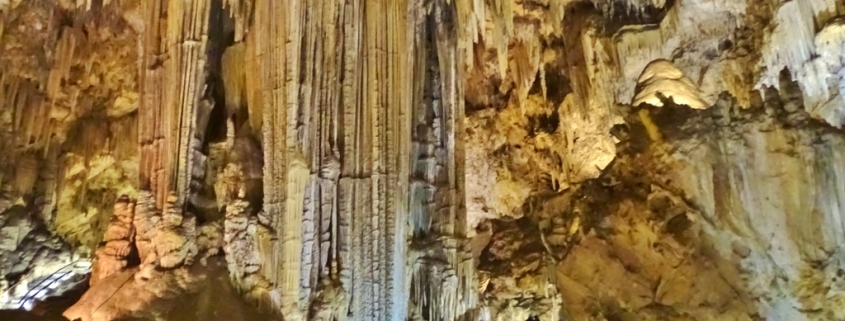
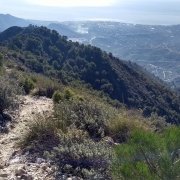
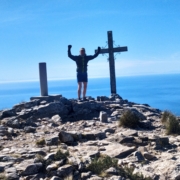
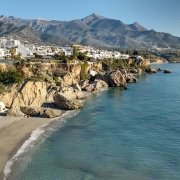
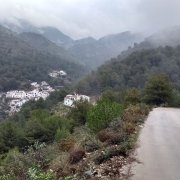
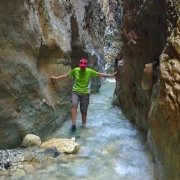
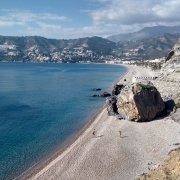
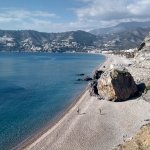
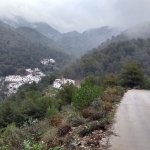
Get the ferry to Mallorca! Lots of cheaper parking over here at this time of year.
Hi Joanne! Just a very quick search but it looks like at least €500 to get the motorhome out and back. One day maybe, but the mainland’s proving enough for us at the mo. Cheers, Jay
Thanks for both blog posts. Great reads.
Hi you two – loving the posts as usual, you’re feeding our dreams of a few weeks escaping the British winter down in Andalucia one year. I have a question about speaking Spanish – I’m learning Spanish myself partly because I love it but also because I want to be able to have proper conversations with locals in Spain. On your campsite are there enough Spanish speakers to make that possible?? I can imagine needing to learn German or Dutch instead!
Hi Debbie. Yep, other than the owners there are few (no?) Spaniards on the site itself and most nationalities speak English here. The owners are very easy going though, and will put up with our attempts at mangling their language! One chap on the site, in his 70s, takes Spanish lessons in Torrox and Nerja, and my feeling is this is the best way to really build up knowledge and practice with the locals. We also found during our house sit at Valle de Abdalajis that very few folks speak English in the smaller towns and villages away from the coast, so heading inland could also be a good strategy. Cheers, Jay